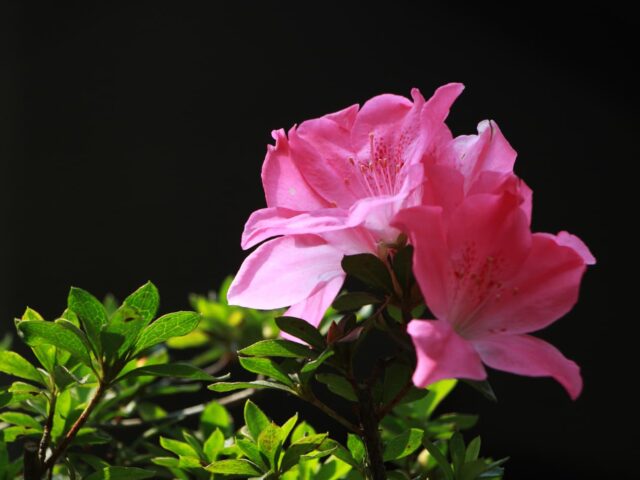Bonsai, the artistic creation of China and Japan, is now appreciated all around the world. You may have seen or heard about these special dwarf trees that are grown in containers. They can be so small that you can even place them on a table inside your home. Now, you may wonder, do bonsai trees bloom?
Bonsai trees might be small in size, but they have all the attributes of trees. It means bonsai trees can bloom and bear fruit, just like normal flowering and fruit-bearing trees. These flowering bonsai trees look beautiful all year round, with or without flowers.
In this article, I will talk about flowering bonsai. I will also talk about when flowering bonsai trees bloom and how you can take care of them. So, make sure to read through the entire article!

When Do Bonsai Trees Bloom?
Flowering bonsai trees are grown in containers. You can grow these plants in different shapes and sizes. Different bonsai trees tend to bloom at different times of the year. However, most bonsai trees typically bloom in the spring and summer.
If you want the flower to look beautiful and healthy, keep your bonsai outside to provide plenty of sunlight. To grow an indoor flowering bonsai, keep it on the balcony or near the window to bask under natural sunlight.
Flowering or fruit-bearing bonsai trees look extremely attractive. Small flowers, fruits, and dwarf-sized bonsai trees will provide you with a spectacular view.
Although most of the flowering trees are outdoor varieties, during winter, you need to keep them away from frost and chilly winds.
Do You Remove The Buds Of Flower From Bonsai?
Flower blooming is a natural feature of any flowering plant or tree, even when it comes to bonsai trees. But sometimes, it becomes necessary to prevent the bonsai from blooming. For styling purposes, many bonsai growers often remove the buds before it’s time to bloom.
To prevent the flowering bonsai from blooming, you have to prune them in the fall or winter, right before spring. The flower buds are cut off, and so the bonsai will not bloom in the coming spring or summer. Now, you may wonder why it is sometimes necessary to prevent the blooming.
There are different styles of bonsai trees. Many growers focus on building up the trunk, root base, and ramification. Thus, they need the bonsai to focus its energy on developing these parts.
When the flowering bonsai blooms, the flowers take away the energy from the branches and trunks of the bonsai. Hence, the trunk and branches will not grow thick.
So if you want to thicken your bonsai or develop the branches, you have to cut the flower buds off. As a result, the energy will be directed back into the branches and the trunk.
So, it is alright to cut off flowers from flowering trees to give them a sturdy shape. After styling them as you like, you can let the bonsai bloom. If you want the flowers to bloom, do not prune all the buds. You can cut some buds if you want to style the blooming flowers.
How To Take Care Of Flowering Bonsai?
Flowering bonsai are grown and styled mostly in the same way as any other bonsai tree species. However, they may need some extra care to bloom with beautiful flowers.
Here are some tips that will help you take care of your flowering bonsai trees:
Providing Sufficient Sunlight
All trees need sunlight, including bonsai. However, flowering bonsai trees require more sunlight than the others. It is important for bonsai to have sunlight to bloom flowers on time. Lack of sunlight may cause delayed flower blooming or no blooming at all.
So, bonsai must be in the sunlight for a longer period of time. Even indoor flowering plants should be placed near a window or balcony to receive indirect sunlight for the full day. Sunlight is also necessary for the beautiful colors of the flowers.
Adequate Water
Another essential element for bonsai plants is water. The bonsai trees should be watered regularly. But different species require a different amount of water throughout the day.
You cannot ignore watering a flowering bonsai because the leaves and buds will become weak without proper watering. They may even discolor. So, check the soil with your fingers or a stick to see how dry it is. When the soil is too dry, water your plant immediately.
On the other hand, over-watering can also be harmful to flowering bonsai trees. Excessive water weakens the roots of the tree. It also prevents the nutrients and minerals from the soil from reaching the leaves or flowers, causing the leaves and flowers to wilt.
While watering the bonsai, the excess water should run out of the container through the drainage hole. And do not water the tree if you see the soil is wet, even after hours of watering.
Mixing Fertilizer In The Soil
A flowering bonsai needs to be grown on fertile soil. Without the essential nutrients and minerals, bonsai will not have the energy to bloom the flowers. If the flowering bonsai is delayed in blossoming, you should mix some fertilizer into the soil.
Fertilizers should be provided depending on the type of flowering bonsai. It should have a balanced amount of phosphorus, nitrogen, potassium, and other elements. These are essential nutrients for flowering plants.
Repotting The Bonsai
Bonsai plants need to be repotted several times while they develop. How frequently you need to re-pot the flower pot depends on the species. Normally, flowering bonsai should be repotted every two years. It has to be done in the spring or after flowering.
Pruning The Flowering Bonsai
It is better to prune the flowering bonsai during the growth period in the spring and summer seasons. If you want it to flower, avoid pruning the flower buds. But if you wish the trunks and branches to develop, prune the buds.
To give it a balanced look, make sure the flowers are evenly distributed all over the bonsai. You can also prune the flowers after they bloom to improve the appearance of the bonsai.
Types Of Flowering Bonsai Trees
There are various kinds of flowering trees; hence, the bonsai trees are also different. So, these flowering bonsai trees are unique in their own way and look amazing with wonderful flowers.
Here are some common types of flowering bonsai trees:
Azalea
Azaleas are the most popular kind of flowering bonsai. These bonsai bear beautiful flowers in shades of pink, red, and white. As they have nice leaves, they look great all year round, even without flowers.
Apple
Another common type of flowering bonsai is the apple specimens. Almost all kinds of apple trees are suitable for making bonsai, especially the monkey apple and pitch apple. Apple bonsai trees give a fresh and pure feeling with their white and pink flowers.
Cherry
Although cherry bonsai can be difficult to grow, expert bonsai growers love the challenge of having them. Many cherry trees of the Prunus genus are grown as bonsai these days. They bloom in different colors, but the most popular ones are the white and pink cherry bonsai trees.
Hibiscus
Flowering trees from Hibiscus are perfect for making bonsai for the indoors. These bonsai trees have a variety of flower colors, such as red, yellow, white, and purple. The flowers can grow quite large.
Pomegranate
Punica granatum, popularly known as pomegranates, are amazing trees that turn into bonsai. As it is a deciduous tree, it will lose its leaves in the fall. But in spring, you will get beautiful orange flowers and tiny pomegranates.
Conclusion
So, do bonsai trees bloom? The answer is, definitely, they do. If you provide proper care, you will have an attractive bonsai full of tiny flowers.
You can fascinate almost everyone by displaying your spectacular flowering bonsai trees at home or in your garden.






